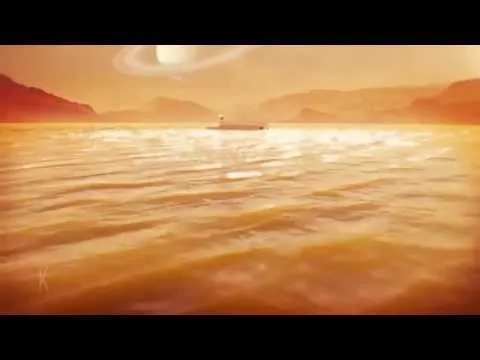
NASA wants to submerge an autonomous submarine in one of the hydrocarbon seas of Titan. Saturn's moon is the only place in our solar system where we have found liquids on the surface, and recently a type of molecule necessary for life has been found, which makes it one of the priorities of space exploration.
To do so, NASA is considering the proposal of a vehicle capable of performing detailed scientific investigations autonomously under the surface of the Kraken Sea, which was discovered by the Cassini mission in 2008, and which is the largest liquid body in the world. the numerous lakes present the region of the north pole of Titan.
In the past other concepts have already been proposed to explore extraterrestrial oceans, although these were limited to suspended probes instead of autonomous vehicles as is now being considered. In addition, the development of this submarine would have a double advantage, since in addition to providing unprecedented knowledge of an extraterrestrial sea, would also help NASA to expand its capabilities of planetary exploration to include nautical operations.
But we must not forget that at the moment it is only a proposal to develop a conceptual design of the submarine. This means that there are still several steps to be taken before it becomes a reality, although the space agency has already designed a conceptual mission design, and is considering carrying it out in the next 20 years.
First you have to be able to get there
In this video we see an example of what NASA has in mind. We see what the submarine's appearance might look like, and how it would submerge and use its sensors to analyze the depths of the Kraken Sea. All these data would be sent back to Earth, where NASA scientists would analyze them.
But to be able to submerge this submarine in Titan, first we will have to be able to take it there. It separates us a distance of 1,400 million kilometers from Saturn's moon, so we first need to build a spacecraft capable of making that trip.
While it is achieved, the scientific community is already working on preparing the ground. The University of Washington, for example, has been helping NASA simulate the conditions to which the vehicle would be exposed when it reaches Titan. In addition, this month have announced the construction of a test chamber to house a liquid mixture at temperatures at 184 degrees below zero to simulate the Kraken Sea.
This is also a vital step, since we can not send Titan a device whose manufacture costs billions of dollars if we are not sure it can survive. For that, in this camera you can go testing the different concepts of the submarine as they are developed.
The research group at the University of Washington that is collaborating is also looking for solutions to some of the problems the submarine is expected to encounter, such as the annoying amount of bubbles that would form a hot machine in such a cold liquid, or the temperatures of Freezing of those lakes to avoid unforeseen events.
